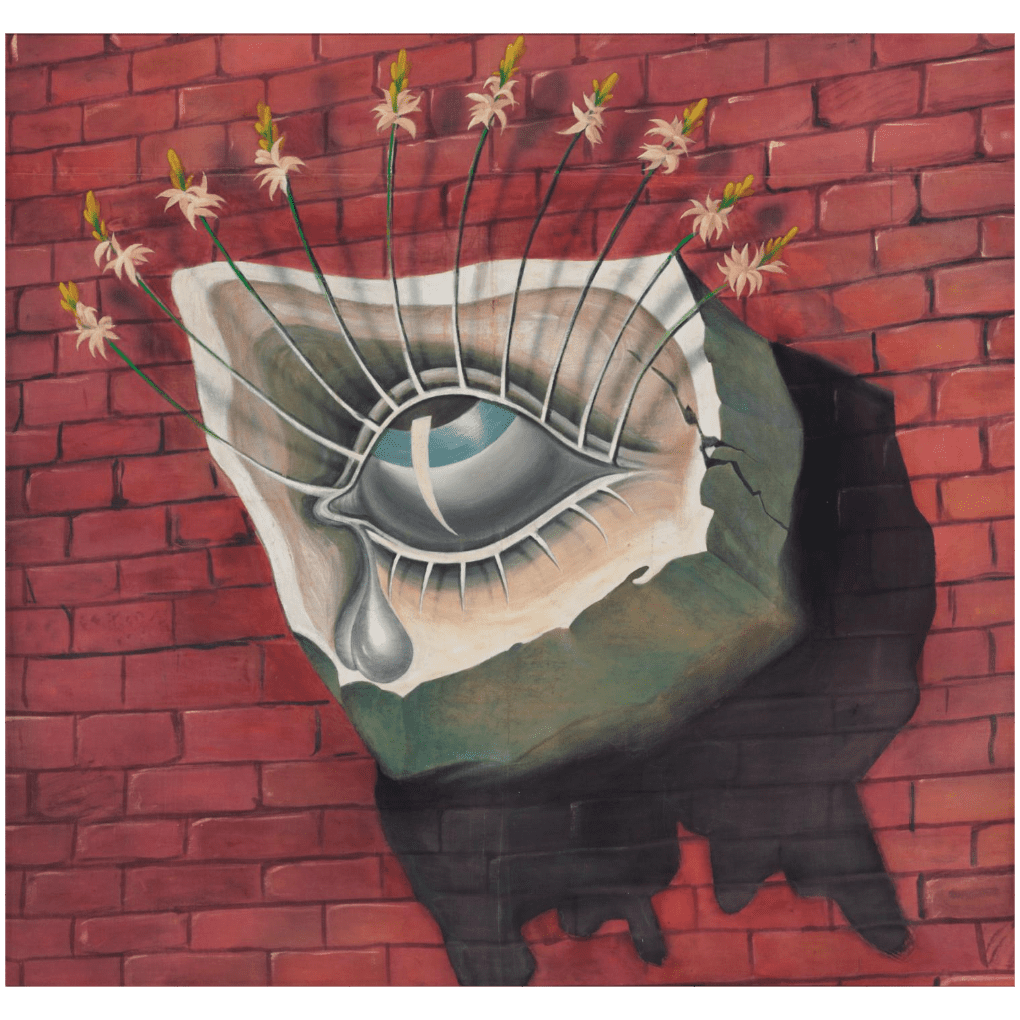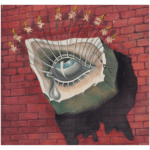Salvador Dalí’s paintings are characterised by a high degree of theatrical flair. The strange, captivating energy with which he creates new worlds on the canvas reveals his admiration of opera and ballet. L’Oeil Fleur is not merely theatrical in its effects, however. It is a rare example of the leading Surrealist’s work in set design, a field he was involved in since 1927. Though unusual in Dalí’s oeuvre, this piece is immediately recognisable as the artist’s work. The eyelashes, which sprout into lilies, recall the flowering head motif that first appeared in Dalí’s work in the early 1930s. Eyes were also highly important to Dalí’s work: the sorrowful eye that features in this piece is strikingly reminiscent of that which features in his painting The Eye, completed a year after this image, in 1945.
For Dalí and many other prominent artists, notably Pablo Picasso, the theatre provided an arena in which to produce large-scale artworks that would be enlivened by performance. The stage, in a sense, was his largest canvas. This particular work was completed by Dalí for the ballet Tristan Fou, choreographed by the Russian dancer Léonide Massine and based on Wagner’s Tristun und Isolde, which premiered in 1944 at the International Theater in Manhattan. In typically grandiose statement, Dalí described the work, a design for the backdrop of the ballet’s first act, as: ‘The First Paranoiac Ballet based on the Eternal Myth of Love in Death.’











